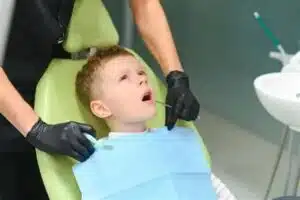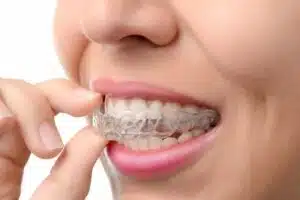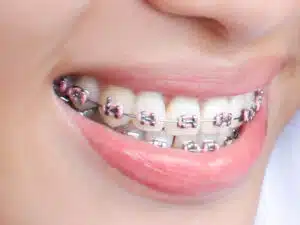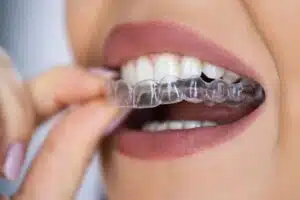Imagine this: your child falls on the playground or bites something hard and loses a baby tooth too early. It might not seem serious. Baby teeth fall out anyway, right? But early tooth loss can affect how your child’s smile develops. Baby teeth are not just placeholders. They guide permanent teeth into the correct position. When one is lost too soon, nearby teeth can shift. This can cause crowding or block adult teeth from coming in. This is where understanding what are space maintainers for teeth becomes essential. They preserve the gap and guide your child’s teeth into proper alignment as they grow.
At Orthodontics Inc. in Yuma, we often see children who lose baby teeth earlier than expected. Many parents are surprised by how much difference a small device can make in protecting a child’s future smile. Space maintainers are designed to hold the gap open until the adult tooth is ready to come in. Without them, orthodontic issues can start before you even realize there is a problem.
In this blog, our Yuma orthodontic team will explain how space maintainers work. We will share when they are needed. We will also cover what local families should know about keeping their child’s smile on track.
What Are Space Maintainers for Teeth?

So, when to use what are space maintainers for teeth exactly? Simply put, they are small, custom-made dental devices. Their purpose is to hold space open in your child’s mouth after a baby tooth is lost too soon.
Even though baby teeth eventually fall out on their own, they play an important role. They guide permanent teeth into their proper positions. When a baby tooth is lost early, it leaves an empty space. A space maintainer keeps nearby teeth from shifting.
Our orthodontists often recommend one of two main types of space maintainers: removable or fixed.
-
Fixed space maintainers are cemented to the teeth and stay in place until the permanent tooth is ready to erupt. These are more common for younger children who may not be ready for the responsibility of caring for a removable device.
-
Removable space maintainers look a bit like a retainer and can be taken out for cleaning. They’re typically used for older kids who can handle the upkeep and are less likely to misplace the appliance.
Each appliance is made specifically for the child’s mouth and dental needs, ensuring comfort while protecting proper development. The goal is simple: keep everything in its proper place until nature catches up. Knowing space maintainers for teeth can be the first step in preventing orthodontic issues before they even begin.
Why They Matter: How Premature Tooth Loss Affects Smile Development
Losing a baby tooth early might not seem like a big deal. In reality, it can set off a chain reaction that affects your child’s entire smile. Baby teeth act as guides. They help permanent teeth erupt in the right place at the right time. Without that guidance, nearby teeth can drift into the empty space. This often leads to crowding or misalignment as new teeth come in.
The shifting does not only affect appearance. It can also cause bite problems, speech issues, and make it harder to keep teeth clean. The longer the space is left unmanaged, the more likely it is that permanent teeth will erupt in the wrong position or even become stuck. This problem, called impaction, often requires more extensive orthodontic treatment later. That treatment may include braces, extractions, or even surgery.
We use space maintainers to prevent these complications before they happen. By holding the space open, the device gives a child’s smile the best chance to grow in naturally. It reduces the risk of long-term problems and helps keep future orthodontic care simple and affordable.
A small preventive step today can save a lot of stress tomorrow.
When Should a Space Maintainer Be Used?
Space maintainers are usually recommended for children between the ages of 4 and 12. During this stage, baby teeth are still doing important work. Adult teeth are also starting to make their way in.
If a baby tooth is lost too early from injury, decay, or extraction, we may suggest placing a space maintainer. This keeps the area open until the permanent tooth is ready to erupt.
You do not have to wait until problems appear to take action. If your child loses a tooth early, schedule an evaluation right away. Discomfort in the empty space is another reason to visit. During these visits, we take X-rays and exams. This helps us check if nearby teeth might shift or block a permanent tooth.
Learning about space maintainers for children’s teeth can help you ask the right questions at your child’s next appointment. Acting early can make a big difference in long-term dental health, often preventing more complicated orthodontic treatment later on.
Types of Space Maintainers & How They Work
Understanding what dental space maintainers are also means knowing which type may be best for your child. The choice depends on the location of the missing tooth, your child’s age, and how soon the permanent tooth is expected to erupt.
Here are the most common types:
-
Band-and-loop: One of the most widely used fixed options. A metal band is cemented around a nearby tooth, and a loop of wire holds the space open.
-
Crown-and-loop: Similar to a band-and-loop, but instead of a band, a stainless steel crown is placed over the adjacent tooth for added protection and durability.
-
Distal shoe: Used when a baby molar is lost before the permanent molar is ready to erupt. It has a small extension that gently guides the adult tooth into place. This option is more complex and usually recommended for younger children.
-
Removable acrylic maintainers: These look like retainers and are typically used for older children who can manage the responsibility of wearing and caring for them properly.
Most space maintainers can be placed in a single appointment and are painless to install. How long they stay in place depends on the timing of your child’s permanent teeth — sometimes just a few months, other times a few years.
We monitor each child’s progress closely with regular checkups. These visits ensure the appliance works properly. They also confirm it does not interfere with healthy development.
Space Maintainers for Teeth: What Parents Should Know
Once your child has a space maintainer, daily care becomes especially important. These devices are low-maintenance, but not no-maintenance. Brushing and flossing should continue as usual, with extra attention to the area around the appliance, while following the best flossing method for effective cleaning. Food can sometimes get trapped around the wires or crowns, so rinsing after meals helps prevent plaque buildup and irritation.
Avoid sticky or chewy foods like gum, caramel, or taffy, since they can loosen or damage the space maintainer. Hard snacks such as nuts or popcorn kernels can also cause issues. Softer, easier-to-chew foods are safer choices. It’s also helpful to remind your child not to push on the device with their tongue or fingers.
Routine checkups play an important role too. During visits, we check the space maintainer closely. We make adjustments if needed. We ensure it continues to support healthy development. Most children are seen every six months, though more frequent visits may be recommended during active growth stages.
With consistent care, space maintainers for kid’s teeth do their job quietly, helping your child’s smile grow without discomfort, delays, or complications.
Are They Always Needed?
Not every child who loses a baby tooth early will need a space maintainer. The decision depends on the amount of space available, your child’s age, and how soon the permanent tooth is expected to come in. If the adult tooth is close, we may simply monitor the area rather than place an appliance.
That’s why a professional evaluation is so important. During these visits, we look at growth patterns, X-rays, and bite development to decide whether intervention is necessary. For some children, a space maintainer can prevent more complicated and expensive orthodontic issues later on. For others, the natural spacing may be just fine without treatment.
If your child has lost a baby tooth earlier than expected, it’s best not to assume. A quick visit to your family or pediatric dentist can clarify how dental space maintainers work and whether using one makes sense, or if watchful waiting is the better option.
Local Insight: Why Space Maintainers Are Common in Yuma Dental Practices
Early tooth loss in children is more common in Yuma than many parents realize. The dry climate can cause dehydration. This may raise the risk of cavities and dental trauma. The active lifestyle in the area, from sports to biking to playground play, also increases the chance of accidents that lead to early tooth loss.
With so many young families here, space maintainers have become a routine part of guiding children’s smiles during growth. At Orthodontics Inc., we see every day how a small appliance can make a big difference. It prevents orthodontic problems before they start.
Wondering about space maintainers for teeth and whether your child might need one? Every smile is unique, and the best way to know is through a professional evaluation. Our team provides guidance tailored to your child’s needs. We focus on long-term goals so you can feel confident about their dental development.
Final Takeaway: A Small Device with a Big Impact
Losing a baby tooth early does not have to derail your child’s smile. A small, custom-fit space maintainer can protect alignment and help avoid costly treatment later. Even though it is tiny, it plays a big role in guiding permanent teeth and keeping spacing on track.
Now that you know what are space maintainers for teeth, you can feel confident discussing the next steps with our team at Orthodontics Inc. in Yuma. Preparing early or responding quickly to tooth loss can protect your child’s future smile. A quick checkup and the right solution today may save them from complex orthodontic issues in the future.
Ready to Take the Next Step?
Our team at Orthodontics Inc. in Yuma is here to help, no matter where you are in the process. We will answer your questions, explain the options, and provide care that fits your child’s needs. Early guidance is the key to building a strong foundation for a lifetime of healthy smiles.
Do not wait until small dental changes become bigger problems. Call us today or book online to schedule your child’s consultation. The sooner we begin, the sooner we can protect your child’s smile and keep their growth on the right track.







